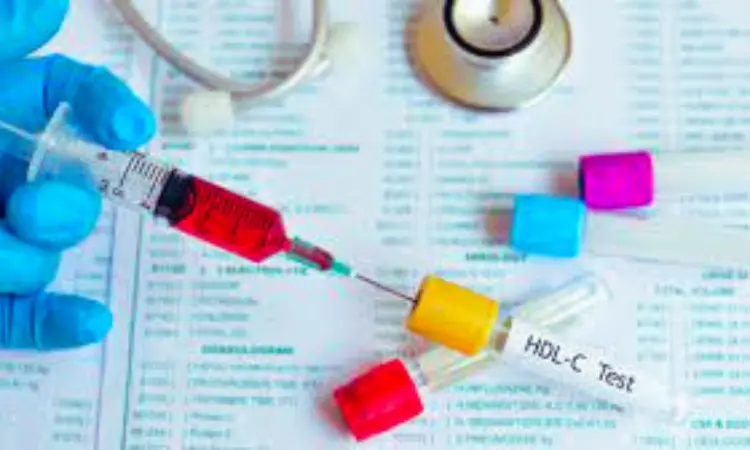- Home
- Medical news & Guidelines
- Anesthesiology
- Cardiology and CTVS
- Critical Care
- Dentistry
- Dermatology
- Diabetes and Endocrinology
- ENT
- Gastroenterology
- Medicine
- Nephrology
- Neurology
- Obstretics-Gynaecology
- Oncology
- Ophthalmology
- Orthopaedics
- Pediatrics-Neonatology
- Psychiatry
- Pulmonology
- Radiology
- Surgery
- Urology
- Laboratory Medicine
- Diet
- Nursing
- Paramedical
- Physiotherapy
- Health news
- Fact Check
- Bone Health Fact Check
- Brain Health Fact Check
- Cancer Related Fact Check
- Child Care Fact Check
- Dental and oral health fact check
- Diabetes and metabolic health fact check
- Diet and Nutrition Fact Check
- Eye and ENT Care Fact Check
- Fitness fact check
- Gut health fact check
- Heart health fact check
- Kidney health fact check
- Medical education fact check
- Men's health fact check
- Respiratory fact check
- Skin and hair care fact check
- Vaccine and Immunization fact check
- Women's health fact check
- AYUSH
- State News
- Andaman and Nicobar Islands
- Andhra Pradesh
- Arunachal Pradesh
- Assam
- Bihar
- Chandigarh
- Chattisgarh
- Dadra and Nagar Haveli
- Daman and Diu
- Delhi
- Goa
- Gujarat
- Haryana
- Himachal Pradesh
- Jammu & Kashmir
- Jharkhand
- Karnataka
- Kerala
- Ladakh
- Lakshadweep
- Madhya Pradesh
- Maharashtra
- Manipur
- Meghalaya
- Mizoram
- Nagaland
- Odisha
- Puducherry
- Punjab
- Rajasthan
- Sikkim
- Tamil Nadu
- Telangana
- Tripura
- Uttar Pradesh
- Uttrakhand
- West Bengal
- Medical Education
- Industry
Increased uric acid to HDL-C ratio predicts elevated metabolic risk in diabetes patients

China: A recent study has found a positive association between uric acid/high-density lipoprotein cholesterol ratio (UHR) and visceral fat area (VFA) in patients with type 2 diabetes mellitus (T2DM).
Based on the findings published in Diabetes, Metabolic Syndrome and Obesity, the researchers suggest that increased UHR may be a convenient and valuable additional measure for evaluating metabolic risk in adults with type 2 diabetes.
The abdominal VFA is linked with metabolic disorder, and IR is measured by bioelectrical impedance analysis. Co-existence of obesity with diabetes is common, especially visceral obesity, which aggravates IR (insulin resistance) and provokes metabolic diseases. Not much research has been done to assess VFA measurement usefulness in patients with type 2 diabetes and visceral obesity, particularly concerning the serum UA to HDL-C ratio (UHR). However, a simple and easy index is required in areas with limited medical resources for early VFA evaluation and to identify T2DM associated with visceral obesity.
To address this knowledge gap, Hongping Sun from Nanjing University of Chinese Medicine in Nanjing, People's Republic of China, and colleagues investigated whether the uric acid to HDL-C ratio is associated with the visceral fat area in patients with type 2 diabetes.
For this purpose, the researchers recruited people aged 18-70 years with type 2 diabetes diagnosis from the National Metabolic Management Center from 2020 to 2022. The participants' medical data collection included general measures, medical history, subcutaneous fat area (SFA), abdominal VFA, and carotid intima-media thickness. The participants were categorized into groups according to VFA <100 cm2 (n=100) and VFA ≥100 cm2 (n=109).
The study revealed the following findings:
- The VFA ≥100 cm2 group had greater weight, height, hip circumference (HC), body mass index (BMI), waist circumference (WC), SFA, fasting plasma glucose, fasting insulin, C peptide, HOMA-IR, uric acid (UA), alanine transaminase (ALT), aspartate transaminase, triglyceride (TG), γ-glutamine acyltransferase (γ-GGT), and UHR measurements and lower HDL-C cholesterol compared with the VFA <100 cm2 group.
- No notable difference was observed between the groups for age, diastolic blood pressure, diabetes duration, systolic blood pressure, IMT, glycosylated haemoglobin, low-density lipoprotein cholesterol, and total cholesterol.
- Positive correlations were seen between the UHR and height, weight, BMI, C peptide, WC, γ-GGT, HC, ALT, UA, and TG, as well as between VFA and these variables.
- Both the VFA and UHR were negatively correlated with HDL-C.
- Positive correlations were seen between VFA and the UHR and UA, and a negative correlation was found between VFA and HDL-C.
- Multivariate linear stepwise regression identified waist circumference, BMI, UHR, HC, and SFA as influencing factors for VFA.
"Our findings revealed that a positive association between higher UHR value and a higher VFA and UHR was seen as an influencing factor for VFA in type 2 diabetes patients," the researchers wrote. "Therefore, a higher UHR value may be a useful tool for predicting greater metabolic risk as an indicator of higher VFA that is more convenient and easier to measure."
Reference:
Sun, Hongping, et al. "Serum Uric Acid to High‑density Lipoprotein Cholesterol Ratio Is Associated With Visceral Fat in Patients With Type 2 Diabetes." Diabetes, Metabolic Syndrome and Obesity : Targets and Therapy, vol. 16, 2023, pp. 959-967.
Dr Kamal Kant Kohli-MBBS, DTCD- a chest specialist with more than 30 years of practice and a flair for writing clinical articles, Dr Kamal Kant Kohli joined Medical Dialogues as a Chief Editor of Medical News. Besides writing articles, as an editor, he proofreads and verifies all the medical content published on Medical Dialogues including those coming from journals, studies,medical conferences,guidelines etc. Email: drkohli@medicaldialogues.in. Contact no. 011-43720751


